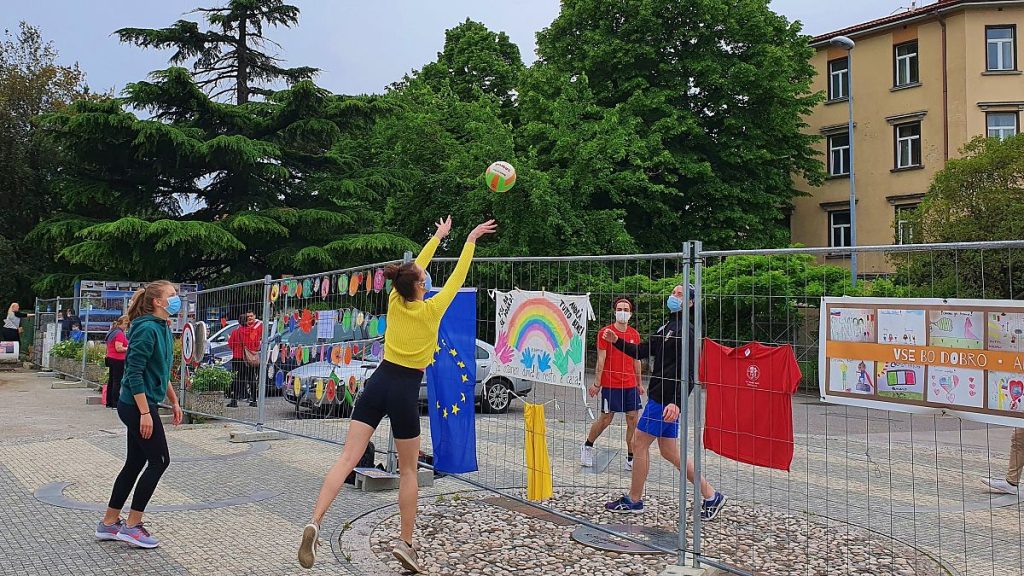The European City of Culture designation, awarded to Nova Gorica in Slovenia and its Italian counterpart Gorizia, presents a unique opportunity for cultural cooperation and integration between two cities divided by a border yet deeply connected in spirit. The candidacy process for Nova Gorica was challenging due to its dual-national composition, but it succeeded by leveraging shared cultural interests, especially highlighted during the COVID-19 pandemic. Andreja Agrež, head of marketing for the GO! 2025 campaign, explains that even amidst the pandemic-induced border restrictions, residents found innovative ways to maintain social connections, such as playing volleyball and enjoying coffee across the divided city. This resilience and creativity established a foundation for future collaboration, showcasing a powerful narrative of unity amid adversity.
The anticipation for the celebrations surrounding the European City of Culture in 2025 is palpable. A key component of the itinerary will involve utilizing the main railway station as a central hub for activities, commencing with the event “Station to Station” on February 8. The event aims to attract diverse audiences with an ambitious program spanning contemporary art, film festivals, dance performances, and dynamic musical acts. Notable partnerships are being formed across the border, with significant contributions from the Friuli Venezia Giulia region in Italy, enhancing the festival’s offerings. This merging of resources speaks to the shared commitment to cultural expression and cooperation, setting a precedent for future endeavors that could strengthen ties between the two communities.
Encouragingly, the initiative doesn’t only represent a temporary celebration; it aims to establish long-term cooperative frameworks within the region. The collaboration extends to local businesses, symbolized by a joint venture between breweries on either side of the border. The Borderless Golden Ale project is a testament to how the culture of brewing, which thrived despite the pandemic, continues to inspire cross-border partnerships. By combined efforts and innovative brewing practices, these local businesses are fostering a sense of community that transcends national boundaries. Their co-op has led to creative promotional events, with distinct offerings that celebrate the rich heritage of both cities while engaging the local populace in a shared experience.
As Agrež points out, navigating the complexities of operating across two separate nations brings its own set of challenges. Differences in regulations and bureaucratic requirements are hurdles that must be overcome to guarantee the success of the European City of Culture initiative. However, local leaders are committed to promoting easier collaboration across various sectors, including business and culture. They envision that this initial step toward unity could pave the way for further projects that simplify processes, enabling a more cohesive approach to regional development. In this light, the initiative not only seeks to celebrate cultural diversity but also aims to lay the groundwork for sustainable partnerships in the future.
Underlying this collaboration is a commitment to leveraging shared identity and common narratives. Overcoming the barriers imposed by borders, both cities strive to create a shared cultural foundation that honors their individual heritages while fostering collective growth. With the European City of Culture accolade, Nova Gorica and Gorizia hope to stimulate local pride, infuse vibrancy into the regional culture, and attract tourism, thereby contributing to economic revitalization. The cross-border nature of the initiative distinctly encapsulates the essence of collaboration and communal identity in a Europe characterized by both diversity and interconnectedness.
As the year of celebration approaches, the cities will continue to work together, deepening connections and creative ventures that celebrate their unique pairing. This level of collaboration serves as an inspiring model for other regions looking to bridge cultural gaps and utilize heritage for collective prosperity. The unfolding developments in Nova Gorica and Gorizia stand poised not only to foster a greater understanding of their dual identity but also to inspire a new wave of cultural cooperation that echoes throughout Europe. The ambitions set forth for 2025 mark the beginning of a new chapter in which these neighboring cities embrace their intertwined destinies while forging ahead into a future of shared possibilities.














